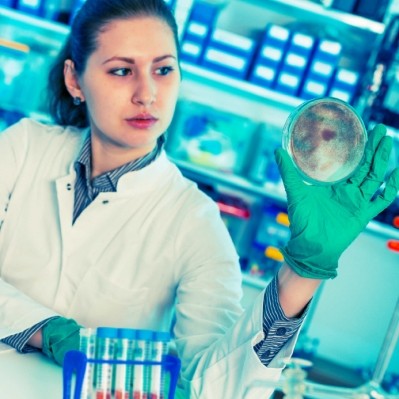EU sets dioxin and PCB levels for food and feed
in food as fears grow in three EU countries, where pig and poultry
feed was found to be contaminated with the family of cancer-causing
chemicals.
The limits will take effect from November 2006 giving food processors and other sector companies another parameter to test for when sourcing their ingredients or releasing their products to market.
Any food or feed in which the sum of dioxins and dioxin-like PCBs exceeds these maximum levels will not be allowed to be marketed in the EU.
Maximum levels for dioxins and dioxin-like polychlorinated biphenyls (PCBs) in food and feed have been applicable since July 2002. However, due to lack of sufficient data and scientific information at the time, the Commission did not set levels for dioxin-like PCBs.
Since 2002, new data on dioxin-like PCBs has become available, the Commission stated in adopting the new limits on Friday. The regulation lays down mandatory limits for the combined level of dioxins and dioxin-like PCBs.
The new limit is part of the Commission's policy to reduce persistent chemicals such as dioxins and dioxin-like PCBs in the food chain. Dioxins and PCBs have toxic properties which can provoke a series of health problems, including cancer, immune and nervous system disorders, liver damage and sterility.
The Commission plans to adopt a recommendation today that sets "action levels" and foresees "target levels" for dioxins and PCBs in feed and food.
The action levels are intended as a tool for the early warning of higher than desirable levels of dioxins in food and feed. They are set at a lower level than the maximum levels, and if the action level is exceeded, companies would be required to investigate the cause of the presence of dioxins.
"Once identified, measures should then be taken to reduce or eliminate this cause," the Commission stated. "This should result in a further decrease of the presence of dioxins and PCBs in feed and food. The target levels, which will be subsequently set, are the levels to be ultimately achieved in order to bring human exposure below the recommended tolerable intake. Target levels will act as the driving force for further measures."
Last week food regulators in Belgium, the Netherlands and Germany placed quarantines on hundreds more pig and poultry producers that received contaminated feed.
So far only South Korea has banned the import of pork from Belgium and the Netherlands as a result of the discovery. The country is the most important non-EU destination for pork produced in the two countries. They exported a total of 25,000 tonnes of pork worth about €62 million to South Korea in 2005.
A total of about 650 pig and poultry farms are now under quarantine in the three countries.
Food safety regulators in the Netherlands and Belgium also announced that some of the meat from contaminated farms was sold in shops over the last two months. Both regulators said the level of contamination did not pose any serious risk to public health.
On Friday Belgium extended a quarantine to a total of 386 pig and poultry producers suspected of receiving feed contaminated with the carcinogen, doubling the number the country's food safety agency (FAVV) had originally banned from the market. Of these 361 were pig farms, 24 were poultry farms, and one rabbit producer.
Tessenderlo, a feed ingredients company fingered as the source of the contamination, today said that an inadequate test had resulted in the error.
"For Tessenderlo Group, discussions about compensation and amicable settlements are premature as long as the various investigations are under way," the Belgium-based company stated. "The problem shows that the PCB test was inadequate for testing dioxins and that we were wrong, as were most specialists, to rely on it."
The discovery of the dioxin contamination was first reported by the Netherlands, which on 25 January sent out an EU-wide alert on pig fat originating from Belgium. The Netherlands said its tests indicated dioxin levels 25 time the maximum permitted concentrations in pork fat.
The dioxin was discovered in pork fat produced by Profat. FAVV said that between 6 and 28 October, two filters at Tessenderlo Chemicals were defective, resulting in untreated hydrochloric acid being delivered to its subsidiary, PB Gelatins. PB Gelatins in turn, supplied animal feed producers with dioxin contaminated ingredients.
FAVV found that that a normal consumption of such the gelatine produced by PB Gelatins is less than 25 per cent of the amount of acceptable dioxin consumption.
" That thus means that there is currently no immediate danger to the public health," the agency stated.
Belgium and the Netherlands, along with France and Germany, are among the top pig meat producers in the EU. The Netherlands accounted for about eight per cent of the EU's production in 2000, according to the bloc's figures.
Dioxin has been the cause of numerous food scares. It was found in Dutch potato animal feed in 2004. Pig farmers in the Netherlands were found to be using it as an illegal hormone for pigs in 2002.
Belgium's meat industry suffered a similar blow in 1999, when dioxin was discovered in pigs and chickens. Then, the industry lost millions of euros either through a quarantine of some 200 Belgian farms, or through the loss of their export markets after some countries imposed bans.
The country ended up slaughtering seven million chickens and 60,000 pigs. The scare, which occurred just before the 1999 general election, played a key part in the landslide defeat of the former government of Jean-Luc Dehaene.




